Internet of things definition
Internet of Things is an Internet-based, traditional telecommunications network and other information bearer, so that all can be addressed by an ordinary physical objects to achieve interoperability of the network. It has three major characteristics: ordinary object device, autonomous terminal interconnection and universal service intelligence.
IOT think-tank study of the definition of several things, found that these definitions, most are defined for the definition of the lack of vitality. The most viable concepts are demand-driven, both in business and in research. The concept of things, from the Internet of Things can solve the needs of the start, perhaps more to promote the development of things networking industry.
Basic connotation
The concept of Internet of Things is proposed in 1999, the Internet of Things of the English name: Internet of Things (IOT), also known as Web of Things. Is regarded as the Internet application expansion, application innovation is the core of the development of things, to the user experience as the core of innovation is the soul of the development of things. In 2005, at the World Summit on the Information Society in Tunis, the International Telecommunication Union (ITU) published the ITU Internet Report 2005: Internet of Things, formally proposing the "Internet of things" concept.
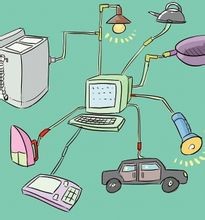
Internet of things
Bohsin defines the Internet of Things as a means of capturing real-time data in real-time through a variety of information-sensing devices such as sensors, radio frequency identification (RFID) technology, global positioning systems, infrared sensors, laser scanners and gas sensors. Need to monitor, connect, interactive objects or processes, collecting its sound, light, heat, electricity, mechanics, chemistry, biology, location and other needs of information, combined with the Internet to form a huge network. Its purpose is to achieve the object and the thing, the thing and the human, all goods and the network connection, facilitates the identification, the management and the control.
Ni Guangnan academician that the Internet of Things through a variety of sensing technology (RFID, sensors, GPS, cameras, laser scanners ...), a variety of means of communication (wired, wireless, long distance, short distance ...), any objects and Internet, in order to achieve remote monitoring, automatic alarm, control, diagnosis and maintenance, thus achieving "management, control, operation" integration of a network.
Distinctive features
Compared with the traditional Internet, Internet of Things has its distinctive characteristics.
First, it is a wide variety of sensing technologies. The Internet of Things to deploy a large number of types of sensors, each sensor is a source of information, different types of sensors to capture the information content and information format is different. The sensor obtains the data with the real-time nature, according to the certain frequency periodic gathering environment information, unceasingly renews the data.
Second, it is a ubiquitous network built on the Internet. Internet technology is an important foundation and the core is still the Internet, through a variety of wired and wireless networks and Internet integration, the object of information in real time and accurately passed out. In the process of transmission, in order to ensure the correctness and timeliness of data, it is necessary to adapt to the heterogeneous networks and protocols. In this paper, the research of the sensor network in the Internet of Things has become a hot topic. .
In addition, the Internet of Things not only provides a sensor connection, its own intelligent processing capabilities, the ability to implement intelligent control of objects. The Internet of Things integrates sensor and intelligent processing, and uses various intelligent technologies such as cloud computing and pattern recognition to expand its application field. From the sensor to obtain the mass of information analysis, processing and processing of meaningful data to meet the different needs of different users to find new applications and application models.
The meaning of "thing"
Here "things" to meet the following conditions can be included in the "Internet of things" range:
1, to have data transmission path;
2, to have a certain storage function;
3, to have CPU;
4, to have the operating system;
5, to have a dedicated application;
6, follow the Internet of things communication protocol;
7, in the world network can be identified in a unique number.
Internet of things principle
Internet of things is based on the Internet, using RFID, wireless data communications technology, construct a cover everything in the world of "Internet of Things". In this network, goods (goods) can communicate with each other without human intervention. Its essence is the use of radio frequency identification (RFID) technology, through the computer Internet to achieve goods (goods) automatic identification and information interconnection and sharing.
And RFID, is able to make items "speak" of a technology. In the "Internet of things" concept, RFID tags stored in the interoperability of the norms of information through the wireless data communications network to automatically collect them to the central information system to achieve the identification of goods (goods), and then through the open Computer network to achieve information exchange and sharing, to achieve the goods "transparent" management.
The Connotation of Internet of Things
From the perspective of the integration of two things of meaning:
One: the basis of industrialization is automation, automation development for nearly a century, theory, practice has been very perfect. Especially with the modern large-scale industrial production automation and process control requirements of the increasingly complex operation of the DCS control system, is the computer technology, system control technology, network communication technology and multimedia technology products. DCS concept is decentralized control, centralized management. Although the automation equipment is all networked, and can control information in the control center and through the operator to centrally manage. But the level of the operator determines the degree of optimization of the entire system. Experienced operators can make the best production, while inexperienced operators only ensure the safety of production. Is there a way to achieve decentralized control, centralized optimization and management? Through the Internet of Things according to all the monitoring information, through analysis and optimization techniques, to find the best control method is the Internet of things can bring DCS control system.
Second: IT information in the early development of its information service object is mainly people, its main problem is to solve the problem of information island. When the information service island solves the problem, it is to solve the information island problem in a wider range. Is to get the material and people to get through the information. People get the information, you can judge according to information, make decisions, which trigger the next step; but because there are individual differences, for the same information, different people make decisions are different, how to get the most information from the information Excellent decision-making? Other things to obtain information can not make decisions, how to make things in the information after the decision-making capacity? Intelligent analysis and optimization technology is a means to solve this problem, in access to information, based on historical experience and theoretical model to quickly make optimal decisions. Data analysis and optimization technology in the integration of industrialization and information technology has a strong demand.
Internet of Things think that the definition of things from IBM's wisdom of the Earth program, five five-year plan in nine pilot industries are all intelligent industry. Regardless of the wisdom of the program, or the smart industry, intelligence is inseparable from the data analysis and optimization techniques. Data analysis and optimization is one of the key technologies of the Internet of Things, and also the key point of the future value of the Internet of Things.
The nature of things
The essence of the Internet of Things is summed up in three aspects: First, the characteristics of the Internet, that is, the need for networking must be able to achieve the interconnection of the Internet; Second, identification and communication features, that is integrated into the "things" To have automatic identification and communication features; third is the intelligent features, that is, network systems should have automation, self-feedback and intelligent control features.
Internet of Things
1. Private Internet of things: generally for a single internal services;
2. Public Internet of Things: based on the Internet to the public or large user groups to provide services;
3. Community Internet of Things: to an associated "community" or community groups (such as a city government subordinate offices: such as the Public Security Bureau, Department of Transportation, Environmental Protection Bureau, Urban Management Bureau, etc.) to provide services;
4. Mixture networking: is the combination of two or more of the above things, but the background of a unified operation and maintenance entities.
Generate the background
1, 1990, the practice of things as early as 1990 can be traced back to the Xerox network Coke machine - Networked Coke Machine.
2, in 1999 in the United States held the International Conference on Mobile Computing and Networking first proposed the concept of Internet of things; is 1999 MIT Auto-ID Center Professor Ashton in the first time to study the RFID. A solution combining item coding, RFID and Internet technology was proposed. Based on the Internet, RFID technology and EPC standard, a real Internet "Internet of Things" (Internet of Things) is constructed, which realizes the real-time sharing of global goods information by using radio frequency identification technology and wireless data communication technology. , Which is set off in 2003, the first round of the foundation of the upsurge of things in China. In 1999, the United States convened the International Conference on Mobile Computing and Networks, "the sensor network is the next century the human face of another development opportunity."
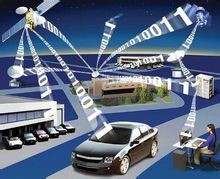
Internet of things diagram
3, 2003, the United States, "Technology Review" proposed sensor network technology will be the future to change people's lives, the top ten technology.
4. At the World Summit on the Information Society (WSIS) in Tunis on 17 November 2005, the International Telecommunication Union (ITU) published the ITU Internet Report 2005: The Internet of Things, quoting the concept of "Internet of things". The definition and scope of things has changed, the coverage has been greatly expanded, not just refers to the RFID technology based on the Internet of things.
5, 2008, in order to promote scientific and technological development, to find new economic growth point, governments began to pay attention to the next generation of technology planning, will look on the Internet of things. In China, the 2nd China Mobile Government Seminar "Knowledge Society and Innovation 2.0" was held in Peking University in November of the same year. The development of the technology of the Internet of Things represents the formation of the new generation of information technology and promotes the economic and social formation , Innovative forms of change, and promote the knowledge-oriented society to the user experience as the core of the next generation of innovation (Innovation 2.0) form of formation, innovation and development more concerned about the user, pay attention to people-oriented. And the formation of innovative 2.0 form and further promote the healthy development of a new generation of information technology.
6, January 28, 2009, Obama became president of the United States, the US business leaders held a "round table", as the only one of the two representatives, IBM CEO Sam Palmisano for the first time that "the wisdom of the Earth" A concept, the proposed new government investment in a new generation of intelligent infrastructure. That year, the United States will be new energy and Internet of Things as the two major focus of revitalizing the economy.
7, 2009 February 24, 2009 IBM Forum, IBM Greater China CEO QIAN Daqun, announced the "wisdom of the Earth," the latest strategy. This concept has been raised, that is, from all walks of life in the United States of great concern, and even some analysts believe that IBM's idea is likely to rise to the US national strategy, and caused a stir around the world. IBM believes that the next phase of IT industry's mission is to make full use of a new generation of IT technology in all walks of life, specifically, is embedded in the sensor and equipment to the grid, railways, bridges, tunnels, roads, construction, water supply Systems, dams, oil and gas pipelines and other objects, and is generally connected to form the Internet of things. In the strategy briefing, IBM also suggested that if the implementation of infrastructure, the implantation of "wisdom" concept, not only in the short term a strong stimulus to the economy, promote employment, but also in a short time for China to build a A mature intelligent infrastructure platform. IBM hopes that the "wisdom of the Earth" strategy can set off the "Internet" wave after another technological industrial revolution. IBM's former chief executive, Gerstner, has raised an important point of view that the computing model changes every 15 years. This judgment is as accurate as Moore's law and is called the "fifteen-year cycle law." The changes that took place around 1965 were marked by mainframes, which were marked by the popularity of personal computers around 1980, and the Internet revolution around 1995. Each such technological change has caused significant turbulence and changes in the competitive landscape among enterprises, industries and even between countries. The Internet revolution to some extent by the United States "information superhighway" strategy ripening. In the 1990s, the US Clinton administration planned to spend 20 to 40 billion US dollars in 20 years to construct the national information infrastructure of the United States, creating enormous economic and social benefits.
Today, the "wisdom of the Earth" strategy is that many Americans believe that with the "information superhighway" have
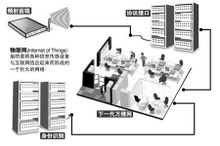
Internet of things diagram
Many similarities are also considered by them to be key strategies for revitalizing the economy and establishing competitive advantages. The strategy can set off as the Internet revolution as the technology and economic tide, not only for the United States attention, more world attention.
8, August 2009, Premier Wen Jiabao visited the CAS Wuxi Industrial Research Institute of things, for the application of things also made a number of views and requirements. Since Premier Wen Ji proposed "perceived China", the Internet of Things has been officially listed as one of the top five emerging strategic industries of the country, written in the "Government Work Report", Internet of Things in China by the whole society great concern, Is in the United States, the European Union, and other countries unparalleled.
The concept of Internet of things is a "Made in China" concept, its coverage with the times, has gone beyond the 1999 Professor Ashton and 2005 ITU report refers to the scope of the Internet of Things has been labeled "Chinese" label.
As of 2010, the Development and Reform Commission, the Ministry of Industry and other ministries are working with relevant departments in the new generation of information technology research to form a new generation of information technology to support a number of new policy measures to promote China's economic development.
The Future of Internet of Things
Things will be the next to promote the world's rapid development of the "important productive forces"!
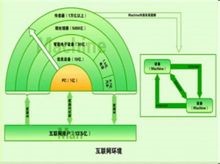
Internet of Things
IOT has the industry's most complete portfolio of professional products, covering everything from sensors and controllers to cloud computing. Products and services intelligent home, traffic logistics, environmental protection, public safety, intelligent fire, industrial monitoring, personal health and other fields. We have built up the comprehensive advantages of "good quality, excellent technology, professionalism, low cost and satisfying customers' needs", and provide competitive products and services to our customers. Internet of Things industry is today's world economic and technological development of the strategic high ground, it is understood that in 2011, the national Internet of Things industrial scale of more than 250 billion yuan, 2015 is expected to more than 500 billion yuan.
Internet of Things is another trillion-level market after communication network.
Technology Architecture
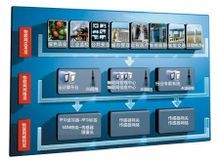
Technical architecture diagram
From the technical architecture point of view, things can be divided into three layers: the perception layer, network layer and application layer. The sensing layer consists of various sensors and sensor gateways, including carbon dioxide concentration sensors, temperature sensors, humidity sensors, two-dimensional code labels, RFID tags and readers, cameras, GPS and other sensing terminals. Sensory layer is equivalent to the role of the human eye ENT and skin and other nerve endings, it is the Internet of things to identify objects, the source of information collection, its main function is to identify objects, gathering information.
The network layer consists of various private networks, the Internet, wired and wireless communication networks, network management systems and cloud computing platform, etc., equivalent to the human nerve center and brain, responsible for the transmission and processing of information obtained by the perception layer.
Application layer is the Internet of Things and users (including people, organizations and other systems) interface, which combines the needs of the industry to achieve the intelligent application of the Internet of Things.
The industry characteristics of the Internet of Things are mainly reflected in its application fields. At present, there are some attempts to use the Internet of Things in various industries such as green agriculture, industrial monitoring, public safety, urban management, telemedicine, intelligent home, intelligent transportation and environmental monitoring. The industry has accumulated some successful cases.
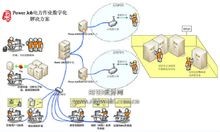
Truly realized the Internet of things
Key Technologies
In the Internet of Things application has three key technologies:
1, sensor technology, which is the key technology in computer applications. As we all know, so far most of the computer processing are digital signals. Since the computer needs to have a sensor to convert analog signals into digital signals, computers can handle them.
2, RFID tag is a kind of sensor technology, RFID technology is a combination of radio frequency technology and embedded technology as an integrated technology, RFID in automatic identification, logistics management has a broad prospect.
3, embedded system technology is a combination of computer hardware and software, sensor technology, integrated circuit technology, electronic application technology as one of the complex technology. After decades of evolution to embedded systems for intelligent terminal products can be seen everywhere; small to the people around the MP3, to the aerospace satellite system. Embedded systems are changing people's lives, and promote the industrial production and defense industry. If the Internet of Things to do with the human body a simple analogy, the sensor is equivalent to the human eye, nose, skin and other senses, the network is used to transfer information to the nervous system, embedded system is the human brain, to receive the information to be classified deal with. This example is very vivid description of the sensor, embedded systems in the Internet of Things location and role.
Key areas
Key areas
1. RFID
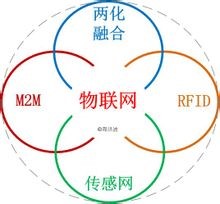
Internet of Things 4 key areas
2.Sensing network
3. M2M;
4. The integration of two.
Application mode
According to its substantive uses can be attributed to three basic application modes:
The smart tag for the object. By using two-dimensional code, RFID and other technologies to identify specific objects, for the purpose of distinguishing individual objects, for example, in life we use a variety of smart cards, bar code label is used to obtain the basic purpose of the object identification information; For example, the balance of the amount on the smart card, the URL and name contained in the two-dimensional code, and the like.
Environmental monitoring and object tracking. The use of multiple types of sensors and a wide range of sensor networks enables real-time acquisition of an object and monitoring of specific object behavior, such as the use of various noise probes distributed in the urban area to monitor noise pollution, monitor the atmosphere through a carbon dioxide sensor In the concentration of carbon dioxide, through the GPS tag tracking vehicle location, through the traffic intersection of the camera to capture real-time traffic flow.
Intelligent control of objects. Internet of things based on cloud computing platform and intelligent network, according to the sensor network to obtain data with decision-making, change the behavior of objects to control and feedback. For example, according to the intensity of light to adjust the brightness of the street, according to the traffic flow automatically adjust the traffic lights interval.
Construction
Internet of Things in the practical application of the need to participate in all walks of life, and the need for national government-led and related laws and regulations on the policy support, to carry out a large-scale networking, broad participation, management, technology, property properties And other characteristics, of which the technical issues is the most critical issue of things;
Internet of Things technology is a comprehensive technology, is a system, currently no company can fully responsible for the entire system of things planning and construction, theoretical research has been launched in all walks of life, and the practical application of Limited to within the industry. The key to the planning and design of the Internet of Things and the R & D is in the fields of RFID, sensors, embedded software, and transmission data calculation.
In general, the Internet of Things to carry out the following steps:
(1) to identify the object properties, attributes, including static and dynamic attributes, static attributes can be stored directly in the label, the dynamic properties need to be detected by the sensor in real time;
(2) need to identify the equipment to complete the property of the object to read, and convert the information suitable for network transmission of data formats;
(3) the object information through the network transmission to the information processing center, completed by the processing center object communication related calculations.
development trend
Industry experts believe that things on the one hand can increase economic efficiency, significant cost savings; the other hand, the global economic recovery can provide technical impetus. At present, the United States, the European Union and other heavily invested in in-depth study of Internet of Things. China is also paying great attention to the study of the Internet of Things. The Ministry of Industry and Information Technology, together with relevant departments, is conducting research on a new generation of information technology to formulate policies and measures to support the development of the new generation of information technology.
Wang Jianzhou, president of China Mobile, said that things will become the focus of China Mobile's future development. He said he would invite Taiwanese manufacturers of RFID, sensors and barcodes to cooperate with China Mobile. With the technology of Internet of Things, Shanghai Mobile has built up a set of wireless integrated application solutions for data collection, transmission, processing and business management in multiple industries. The latest data show that more than 100,000 chips have been loaded in taxis, buses, a variety of networking applications in all walks of life to show their talents, to ensure the orderly operation of the city. During the Expo, the "car through" fully used in Shanghai public transport system, with the most advanced technology to ensure the smooth flow of traffic around the Expo site; logistics management for logistics enterprises "e logistics", will provide users with real-time accurate Freight status information, vehicle tracking and positioning, transportation route selection, logistics network design and optimization services, greatly enhance the comprehensive competitiveness of logistics enterprises.
In addition, universal, for animals, plants and machinery, goods, sensors and electronic tags and supporting the number of interface devices will greatly exceed the number of mobile phones. The promotion of Internet of things will become another drive to promote economic development, for the industry has opened up a potential for unlimited development opportunities. In accordance with the current needs of the Internet of Things in recent years on the need to billions of sensors and electronic tags, which will greatly promote the production of information technology components, while increasing the number of employment opportunities.
Has many uses
Range of application
The Internet of Things is widely used in intelligent traffic, environmental protection, government work, public safety, safe home, intelligent fire, industrial monitoring, environmental monitoring, elderly care, personal health, flower cultivation, water monitoring, food tracing, intelligence detection and intelligence gathering. And other fields.
The International Telecommunication Union (ITU) report in 2005 painted a picture of the "Internet of Things" era: when the driver fails to operate the car will automatically alarm; briefcase will remind the owner forgot what; clothes "tell" washing machine on the color and water temperature The requirements and so on. Internet of things in the field of logistics applications such as: a logistics company using the IOT system of goods vehicles, when the load overweight, the car will automatically tell you overloaded, and overloaded, but there is space remaining, tell you how light cargo When the driver unloading, a cargo packaging may shout "You throw me hurt," or "My dear, please do not be too barbaric, can you?"; When the driver and others in the gossip, truck Will be pretending to be the voice of the boss roar "fool, the start!
Internet of Things to a new generation of IT technology is fully utilized in all walks of life, specifically, is embedded in the sensor and equipment to the power grid, railways, bridges, tunnels, roads, construction, water supply systems, dams, oil and gas pipelines and other And then integrate the "Internet of Things" with the existing Internet to realize the integration of human society and physical system. In this integrated network, there is a super-powerful central computer cluster capable of integrating the personnel within the network , Machinery, equipment and infrastructure management, and on this basis, the human can be more sophisticated and dynamic way to manage the production and life, to "wisdom" state, improve resource utilization and productivity levels, improve people and The relationship between nature.
Applications
First: Internet of things sensor products have taken the lead in the Shanghai Pudong International Airport anti-intrusion system has been applied.
The system is equipped with more than 30,000 sensor nodes, covering the ground, fence and low-altitude detection, to prevent personnel from crossing, illegal immigrants, terrorist attacks and other aggressive invasion. Shanghai World Expo and the Chinese Academy of Sciences Wuxi high-tech micro-sensor network engineering and technology research and development center to sign an order to buy anti-intrusion micro-nano sensor network products 15 million yuan.
Second: ZigBee street light control system, Jinan Park Expo Park. ZigBee wireless street lighting energy-saving environmental protection technology is the application of the Park Expo in a major bright spot. ZigBee wireless technology to achieve all of the functional lighting of the park using the wireless street lamp control.
Third, the first cell phone networking settled in Guangzhou
Mobile terminal and e-commerce model, so that consumers can easily interact with the business exchanges, anytime, anywhere experience brand quality, communication and sharing of information, to achieve the Internet to the Internet of things over-calm, to create a new zero-touch , High transparency, risk-free market model. In fact, mobile Internet shopping is flash purchase. Guangzhou flash through mobile scanning bar code, two-dimensional code, etc., can be shopping, parity, identification products and other functions.
This combination of smart phones and e-commerce, "mobile Internet of Things" one of the important features. Is expected in 2013 the proportion of mobile Internet of Things will be more than half of things, to 2015, the size of the mobile phone market of 684.7 billion yuan of things, mobile Internet of Things is accompanied by a large-scale rise of e-commerce applications.
Development issues
Although China has mass production of radio frequency tags, but there are still four major problems restricting development. First of all, the chip and reader core module is heavily dependent on imports. Second, the radio frequency tag technology standards absent. Again, the market factors restricting the large-scale promotion of radio frequency tags. Fourth, private enterprises in a competitive disadvantage, the attitude of cautious venture capital.
Misunderstanding
Misunderstanding one
The sensor network or RFID network is equivalent to the Internet of things. In fact, sensing technology Ye Hao, RFID technology Ye Hao, are just one of the information collection technology. In addition to sensing technology and RFID technology, GPS, video identification, infrared, laser, scanning and all can achieve automatic identification and object communication technology can become the Internet of things information collection technology. Sensor network or RFID network is only an application of things, but not the whole of the Internet of things.
Misunderstanding of the two
The Internet of Things as an infinite extension of the Internet, the Internet of Things as a completely open, all interconnected, all shared Internet platform. In fact the Internet of Things is by no means an infinite extension of the simple global sharing of the Internet. Even if the Internet is not only that we usually think of the international share of computer networks, the Internet also has a wide area network and LAN points.
Internet of things can be our usual sense of the Internet to the extension of the object can also be formed according to the actual needs and industrial applications LAN, professional network. The reality is not necessary and impossible to make all the items online; also no need to make professional network, LAN must be connected to the global Internet sharing platform. The future of things and the Internet will be very different, similar to intelligent logistics, intelligent transportation, smart grid and other professional networks; intelligent community LAN is the largest application space.
Misunderstanding of the three
That the Internet of things is the ubiquitous network of objects, so that the Internet of Things is a castle in the air, is currently difficult to achieve technology. In fact the Internet of things is real, many of the primary application of the Internet has long been in our service. Internet of Things concept is based on the introduction of a lot of practical application of the integration of the integration of innovation, is the long existence of the interconnection with the network, intelligent, automated system of generalization and upgrading, it upgraded from a higher point of view Our understanding.
Misunderstanding of the four
The Internet of Things as a basket, what are installed; based on their own understanding, to only be able to interact, communication products as things networking applications. Such as, just embedded in a number of sensors, has become the so-called Internet of things appliances; the product labeled RFID tags, has become a networking application and so on.
Expert opinion
June 22, 2010 opening of the Shanghai International Internet of Things Conference pointed out: the Internet of Things will become the global information and communication industry trillion-level emerging industries. By 2020, the global access network of terminals will reach 50 billion. China as a global Internet power, the future will focus on things networking industry chain, in the policy market, technical standards, commercial applications, such as key breakthroughs to create a global industrial heights.
Internet of Things is the computer, Internet and mobile communications after another revolution in the information industry. At present the Internet of Things has been officially listed as one of the strategic emerging industries of national key development. Internet of Things industry has a long industrial chain, involving a number of industrial clusters of features, its application covers almost all walks of life.
China Internet Association, Hu Qiheng: China's rapid development in recent years, the Internet industry, the number of Internet users in the world, in the future development of the Internet of Things industry already has the foundation. The Internet of things to connect objects, to achieve the purpose of remote control, or to achieve people and objects or objects and the exchange of information between. The current application of industry needs and areas of things very wide, the potential market size is huge. Internet of things in the development of industry will also drive sensors, microelectronics, video identification system, a series of simultaneous development of the industry, bringing huge industrial cluster production efficiency.
China's Ministry of Industry and Information Technology Development Director Zhang Feng: Internet of things is one of the most potential industries, will effectively promote the transformation and upgrading of traditional industries, leading the strategic development of new industries to achieve economic structure and strategic adjustment Which is the strategic commanding point of economic development and scientific and technological innovation in the post-crisis era. It has become the leading force in building a new social model and reshaping the country's long-term competitiveness in various countries. . China must firmly grasp the direction and opportunities for industrial innovation, speed up the development of things industry.
Li Gang, deputy general manager of China Unicom Group: the support of information technology, Internet of things is a new round of lifestyle changes, has become a rapidly developing large-scale market. China's domestic RFAD, for example, in 2009 reached 8.5 billion yuan, ranking third in the world, second only to the United Kingdom and the United States. The future more secure and stable transmission of wired and wireless data transmission network, will become the key to the rapid development of China's Internet of things.
Yang Yun, CEO of Beijing Yi Yun intelligence that the development of things need "four-point linkage": the development of things needs national policy support, but also the need for relevant standards and norms; enterprises should accumulate core technology, vertical development, horizontal joint; And promotion; positive reserves and training of personnel in this area.
COPYRIGHT (C) 2016-2017 浙ICP备17014455号-1

